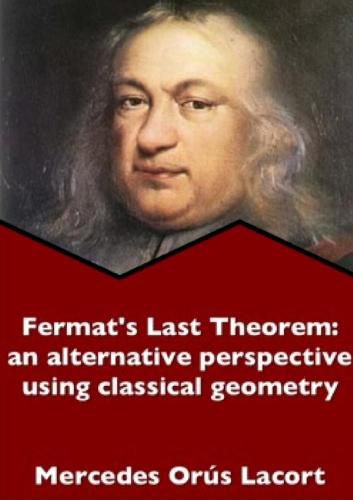Readings Newsletter
Become a Readings Member to make your shopping experience even easier.
Sign in or sign up for free!
You’re not far away from qualifying for FREE standard shipping within Australia
You’ve qualified for FREE standard shipping within Australia
The cart is loading…






This title is printed to order. This book may have been self-published. If so, we cannot guarantee the quality of the content. In the main most books will have gone through the editing process however some may not. We therefore suggest that you be aware of this before ordering this book. If in doubt check either the author or publisher’s details as we are unable to accept any returns unless they are faulty. Please contact us if you have any questions.
The relevance of this theorem in the history of mathematics is truly remarkable. A comment was first written by Pierre de Fermat in the margin of the original version of his copy of the Arithmetica of Diophantus. He literally said that the margin was too narrow to show his proof. Still, Fermat's original proof, if existing, has remained a mystery over the years. Using advanced mathematics, a truly remarkable proof of the theorem could be put forward only recently by A. Wiles. Still, the conjecture behind FLT was inspired while studying a new edition of the Arithmetica, precisely when Fermat was reading about how to write a square number as a sum of two squares, that is, how to find Pythagorean triples that are solutions of the quadratic Diophantine equations. For this reason, it looks plausible at least in principle that the theorem can also be studied from a different perspective, closer to what Fermat had probably in mind originally, either correct or wrong.
$9.00 standard shipping within Australia
FREE standard shipping within Australia for orders over $100.00
Express & International shipping calculated at checkout
This title is printed to order. This book may have been self-published. If so, we cannot guarantee the quality of the content. In the main most books will have gone through the editing process however some may not. We therefore suggest that you be aware of this before ordering this book. If in doubt check either the author or publisher’s details as we are unable to accept any returns unless they are faulty. Please contact us if you have any questions.
The relevance of this theorem in the history of mathematics is truly remarkable. A comment was first written by Pierre de Fermat in the margin of the original version of his copy of the Arithmetica of Diophantus. He literally said that the margin was too narrow to show his proof. Still, Fermat's original proof, if existing, has remained a mystery over the years. Using advanced mathematics, a truly remarkable proof of the theorem could be put forward only recently by A. Wiles. Still, the conjecture behind FLT was inspired while studying a new edition of the Arithmetica, precisely when Fermat was reading about how to write a square number as a sum of two squares, that is, how to find Pythagorean triples that are solutions of the quadratic Diophantine equations. For this reason, it looks plausible at least in principle that the theorem can also be studied from a different perspective, closer to what Fermat had probably in mind originally, either correct or wrong.